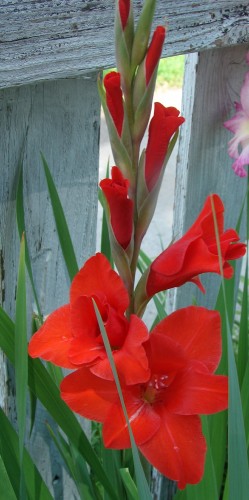All posts tagged gladiolus
The Stately Gladiolus Represents Integrity and Passion
The gladiolus flower is best known for its tall spikes of ruffled blooms. These stems can reach two to four feet in length with blossoms blooming in succession from the bottom up. Gladioli are a member of the Iris family and originated in Africa and the Mediterranean several thousand years ago. Continue reading [...]
The Right Flowers for an August Birthday – Gladiolas
August is quickly approaching and the birth flower for August is the gladiolus. Symbolizing sincerity and strength of character, the gladiolus is available in a range of colors such as white, red, pink, orange, fuchsia, lavender and yellow. Known for its graceful long stems and soft billowy blooms, the gladiolus is a romantic flower that looks like a water painting. Continue reading [...]
August Flowers
This flower guide for the month of August gives you the meaning of flowers (gladiolas or as an alternative, poppies are the birth month flowers for August.) Send flowers of either type, and this flower guide explains the message you'll be sending along with your bouquet or arrangement. Continue reading [...]

